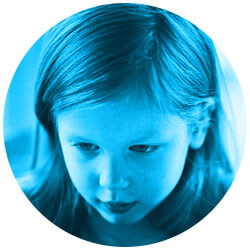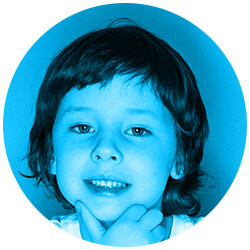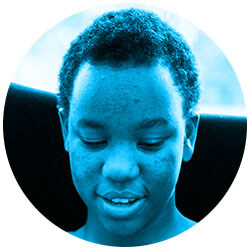General Introduction
Why Is Critical Thinking Important?
Why is critical thinking important? In short, because thinking skills are needed to navigate today’s world. Typically, learning how to think is something we reserve for upper-level students in high school or college. This is a missed opportunity. We should pay more attention to child thinking. Children think more and at a higher level than we typically give them credit for, and critical thinking skills are vital for children’s general development and, ultimately, for the health of society as a whole.
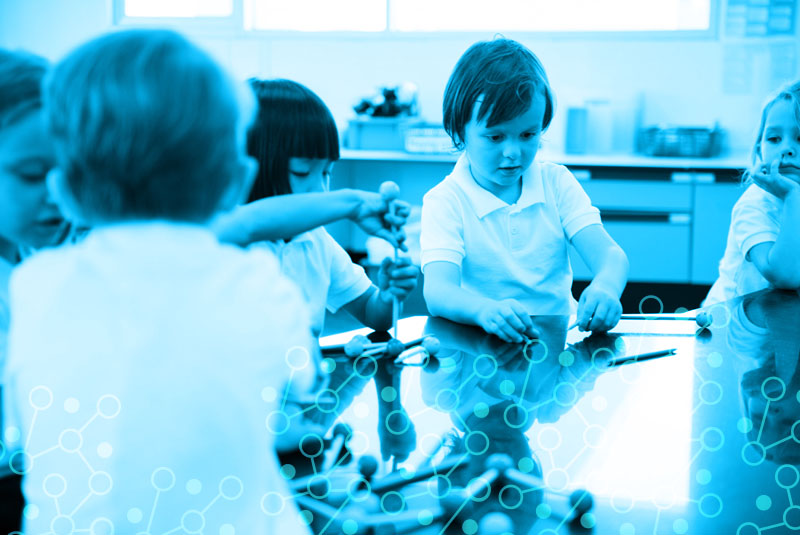
Young people are especially vulnerable to the many distractions and influences that can impede critical thinking and cognitive development. Media literacy and information literacy should not just be considered niche subjects; they’re an absolute must for children growing up in such a complicated, information-rich, and, at times, confusing world. Building healthy habits of mind from a young age can prepare children for these challenges and provide a lifelong foundation for effective thinking.
This guide strives to provide parents with an understanding of what critical thinking is and how to foster it in their children. Critical thinking is not a peripheral skill, but central to the development of children’s language and reasoning skills, to their relationships with both their parents and peers, and even to their very sense of self.
Critical thinking cannot be taught exactly the way arithmetic or vocabulary is taught. To a certain extent, children must develop the habits of independent thought on their own. But there is still a great deal that parents can do to encourage critical engagement in their children, help them develop long-term interests and habits, and warn them against the numerous obstacles to clear thinking they will face.
This website is divided into three sections by age group:
1 – Awakening a Critical Perspective
Critical thinking involves looking at the world from a certain point of view, what’s sometimes called a “critical perspective.” But what exactly is a critical perspective and how should we go about achieving it ourselves and awakening it in others?
Simply put, a critical perspective is a standpoint from which a person is able to interpret an issue and take a well-considered and open-minded position on it.
Take the following question as an example:
“Should we stop eating meat?”
Ask this question to a group of children. What happens?
Some children may express their opinion, while others may shy away from speaking. Among those children who do voice an opinion, many will repeat arguments they may have heard from authority figures, such as their parents or the media. Many will have strong positions and be convinced they’re right, but be unable to back up their position when challenged.
A smaller number may venture a personal opinion—one that stems from their own reflection on both the question and the information they have been given. A still smaller number may also support their position with original arguments and be willing to consider other points of view, as well as criticism of their own position.

2 – What Is Critical Thinking?

3 – Dimensions of Critical Thinking
More than merely reasoning correctly, critical thinking involves the high-level functioning of a number of different psychological, emotional, and social faculties.
Consequently, the study of the development of critical thinking spans all branches of psychology, cognitive science, and neuroscience.
The cognitive dimension of critical thinking:
The psychological dimension of critical thinking:
Critical thinking is only possible if children have enough self-esteem to think for themselves. This requires both love as well as the imposition of certain limits from parents.

Self-esteem gives children the confidence to rely on their own reasoning rather than just unthinkingly adopting the attitudes of others. It also allows them to have influence on a given discussion. Their criticisms and opinions can only have an impact if they have the self-assurance to voice them.
To enable critical thinking, we must also possess emotional management skills in order to rise above attractions, distractions, and compulsive urges.

Maintaining balance between the cognitive and emotional dimensions of thinking is dependent upon psychological stability. A paranoid person, for example, may interpret a logical or argumentative weak spot in an argument as an attempt to manipulate rather than an honest mistake. Children or adults with low self-esteem may become paralyzed by their emotions and be unable to defend their own position.
Our emotions, if excessive and unchecked, can weaken our cognitive faculties and our critical thinking skills, lowering the quality of the discussion and giving free rein to cognitive biases. These biases can, in turn, provoke emotional responses from the other side of the argument, turning a rational debate into a fight.
The social dimension of critical thinking:
Critical thinking, from a very early age, requires a learning environment that affirms and communicates free thinking and individuality. It is usually not until the ages of 10 to 12 that the education system begins to emphasize argumentative skills for English, mathematical logic and proofs, or debate. But this is starting to change. For example, the all-too-rare introduction of philosophical debate in elementary schools has been a resounding success. Students are highly enthusiastic about it, and they come up with remarkably sharp arguments.
Programs like philosophy for kids can help provide the social context for critical thinking. They give students practice developing confidence and assertiveness, learning how to make their mark within a social group, and thinking for themselves. These are not universal or automatic values. If teachers set themselves up as absolute authorities, for example, students have no chance to challenge ideas and learn independent thinking.
A student may be logical and able to manage their emotions. But without certain cultural values in place, critical thinking will never become a part of their behavioral skill-set.
Metacognition
To develop critical thinking in children and teenagers, parents and educators must grapple with these three dimensions. In so doing, they can begin to instill in children the ability to think about their own thinking. This practice, called “metacognition,” is a crucial precondition for developing the analytical skills central to critical thinking. It is both possible and important to develop children’s critical capacities through metacognition beginning at around the age of eight. For children younger than eight, it is much more important to develop self-esteem and emotional management skills.
Metacognition is the ability to analyze one’s own mechanisms of thought and one’s own cognitive processes in general.
If children who think “eating meat is wrong” recognize that this opinion may be adopted by certain people only because it is fashionable, rather than because of ethical concerns, they are thinking about their thinking.
Through metacognition, children accept that an opinion is not an absolute. Other people may disagree; persuasion and argument are, therefore, necessary. What’s more, metacognition encourages children to listen to other people’s arguments and reflect before accepting or rejecting them. Rapidly, argumentative and reflective modes of thought are reinforced and become a source of enjoyment.

A crucial part of metacognition is being able to understand and identify with perspectives other than one’s own. For young children, emotion seems to be an argument in itself. An emotion is, by its very nature, irrational and always seems absolutely correct from a child’s point of view. Parents must help their children realize that their emotional reactions are not the same as everyone else’s.
Although a child may be repulsed by hamburgers, for example, he or she can come to recognize that other children delight in eating them. A child can, empathetically and calmly, learn to mull over such thoughts and use critical thinking to shift focus away from their emotions and onto their thoughts.
The goal should not necessarily be to change the child’s mind. Critical thinking can serve to teach your children to respect others and to base their arguments on something other than their emotions. This training in argument stimulates the mind, fostering the growth of new neural pathways and improving cognitive efficiency. It also lays the groundwork for a mode of thought that complements, if not surpasses, argument: that of reasoning.
4 – Childhood Stages of Development
The level of development that parents can expect their children to reach depends heavily on their age group. The pioneering psychologist Jean Piaget offers a useful developmental framework that will help guide parents in determining how to best support their children’s critical thinking development through the various phases of childhood.
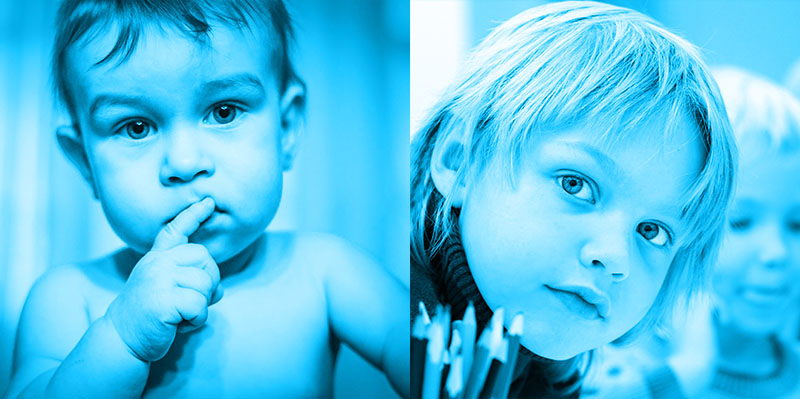
Piaget's stages of cognitive development
1. The Sensorimotor Stage
This stage spans from birth until around the age of two. Over this period, children’s contact with their surrounding environment depends entirely on movements they make and sensations they experience. Children systematically touch, throw, and taste new objects to discover each object’s characteristics through trial and error. Halfway through this stage, just before children turn two, they grasp the notion of object permanence (the fact that objects continue to exist even when they cannot see them).
2. The Preoperational Stage
This stage begins from around age two and ends around age six or seven. During this early childhood stage—characterized by, among other things, the first stages of language production—children become capable of thinking in symbolic terms, of representing things through words and symbols. Children also learn to grasp the notions of quantity and space, as well as the distinction between the past and the future. But, above all, they remain geared toward the present and toward tangible physical situations, finding abstract concepts hard to grasp. Their thinking is also very egocentric. They often assume that others see things from their own point of view.
3. The Concrete Operational Stage
This stage takes place from the age of six or seven to 11 or 12. Having accumulated some experience of the world, children gain the ability to conceive of events totally alien to their own lives.
Between the ages of six and nine, children’s vocabulary expands considerably, and although their ability to reason remains very limited, they become increasingly capable of arguing, defending, or rejecting an idea based on their own concrete experience and various other influential sources.
From the age of nine or 10, children get better and better at conceptualizing and creating lines of reasoning that still, despite all the progress made up to this point, require a direct relationship to their concrete experience. A certain degree of abstraction also allows them to tackle mathematics beyond mere arithmetic. It becomes possible for a child to resolve problems involving numbers and reasoning, though these must still be related to observable phenomena. At this stage, only gifted children are able to solve abstract problems by systematically dissecting several variables.
4. The Formal Operational Stage
This stage gradually develops from the age of 11 or 12. New skills at this stage, like hypothetic-deductive reasoning (the ability to form and evaluate if-then statements) and the ability to establish abstract relationships, are generally mastered around the age of 15 or 16. At the end of this stage, children, like adults, are able to use formal and abstract logic, but only if they have learned logical vocabulary (the formal meanings of words like “if,” “then,” “therefore,” etc.) and have put it into practice. They can also start to reflect on probabilities and on moral concepts, such as justice, as they become able to better reason with generalizations about concrete situations.

